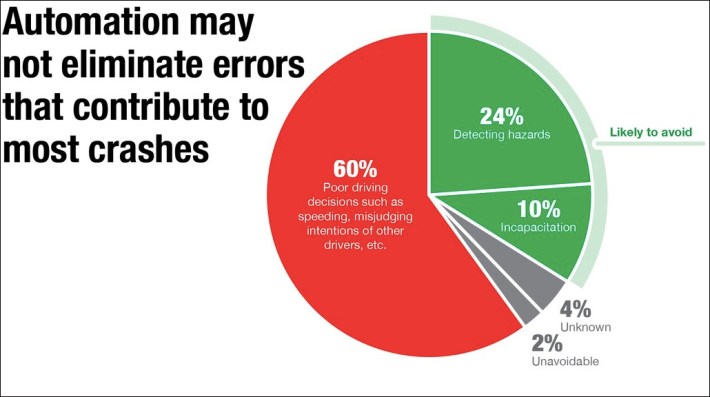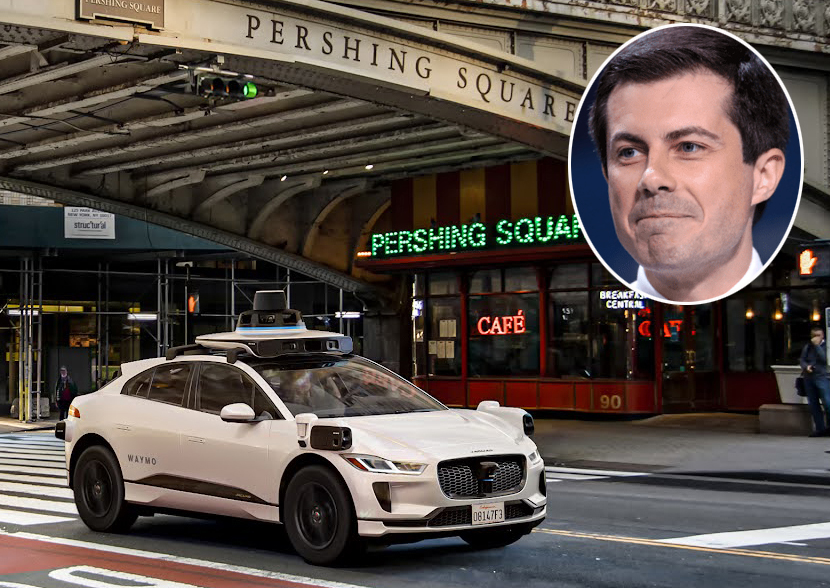Transportation Secretary Pete Buttigieg delivered a shockingly candid take on the driver aggression the recklessness that is fueling a road violence epidemic that killed nearly 43,000 people last year — but his candor is only going to lead us down a long and likely painful road to automation.
First, the background: In an interview with Quartz, Buttigieg squarely blamed drivers.
“Just to be very clear, human drivers aren’t just problematic," the former South Bend mayor told Executive Editor Heather Landy. "They are murderous. Forty thousand people a year die in a car crash. And we have been bathed in this level of carnage all our lives. And so we’re a bit like people who grow up in a place that’s experiencing a war, in terms of how normal we think that is.”
Then Buttigieg offered his thoughts on how to quell the "carnage" — automated vehicle technology, and someday, perhaps, true self-driving cars — even if he acknowledges it might introduce new types of road violence in the process.
"Psychology is going to be tough,” Buttigieg said, referring to how the public will react (and indeed, already has reacted) to crashes involving cars with imperfect driver-assist technology. “If robots killed 10,000 people a year on the roads, there would be an uproar. But that would represent a 75-percent reduction in roadway deaths compared to where we are now. So we’ve got to make sure the reality and the perception of it is moving in the right direction.”

Buttigieg is absolutely right, of course, that crash deaths have been essentially shrugged off for far too long in America, especially considering that our annual per capita roadway fatalities fall somewhere between three and six times that of our peer nations. The secretary should be applauded for pointing out the subtle but profound ways that car culture skews our collective Overton window, rendering tens of thousands of preventable deaths every year not only acceptable, but largely inevitable in the eyes of a manipulated public.
Some advocates, though, might disagree with Buttigieg's implication that the "murderous" intentions of U.S. drivers are what lies at the root of that bloodshed, rather than the vast network of unsafe systems that transform decidedly non-murderous motorists into killers, simply by encouraging them to buy deadly cars and operate them at deadly speeds. (To be fair, Buttigieg's DOT is doing a lot to address the role of all those systems with the release of the National Roadway Safety Strategy, so we'll chalk this quote up to the heat of the moment.)
And they may disagree even more with Buttigieg's thoughts on the role of vehicle automation in saving lives — or, as he put it with eerily religious fervor, delivering us to the "sort of promised land on the other side" of the coming AV revolution.

Here's the thing: "Vision Zero" is not at all the same thing as "Vision-10,000-Loved-Ones-Dead." And the public would be absolutely right to be outraged should that vision come to pass, especially if it were attributable to an over-reliance on strategies that might continue to line the pockets of the auto-industrial complex.
In touting AV technology as a net win for U.S. road safety despite an enormous and bloody margin of error, Buttigieg is falling into a common but critical trap: confusing the goal of reducing car crash deaths and serious injuries with the stalwart commitment to end them completely. The two are not the same, and though they share many strategies, they are executed in vastly different ways.
A "Vision-10,000-Loved-Ones-Dead" approach, for instance, might pour roughly $100 billion into developing self-driving cars (with at least a little government subsidy in the form of direct grants and preferential corporate tax treatment) — enough to fund the annual apportionment to the Transportation Alternatives Program 69 times over (though not enough to, y'know, actually deliver a real self-driving car.)
A Vision Zero approach, meanwhile, would pour $100 billion and more into building sidewalks, bike lanes and narrow roads that make it physically challenging for drivers to travel at speeds that can kill anyone.
A "Vision-10,000-Loved-Ones-Dead" approach would acknowledge that technologies like automatic emergency braking systems are already showing promising benefits on our roadways...though we shouldn't be surprised if that approach downplays how likely today's systems are to fail at night at the high speeds when drivers are both most likely to both crash and to be killed on impact. (Ditto pedestrian automatic emergency braking systems, which often fail too on the dark, unlit roads where walkers are disproportionately likely to lose their lives.)
A Vision Zero approach, meanwhile, might focus its energy on solving the tough "psychology" problem of getting automakers to accept that their astounding profit margins on SUVs are not worth the loss of even a single child's life, considering that kids are eight times more likely to be killed when struck by that style of vehicle. Though considering that NHTSA could regulate megacars tomorrow and has yet to do so, that may be more of a political problem than a psychological one.
“human drivers aren’t just problematic. They are murderous. Forty thousand people a year die in a car crash. And we have been bathed in this level of carnage all our lives. And so we’re a bit like people who grow up in a place that’s experiencing a war” - @SecretaryPete 🔥🔥🔥 https://t.co/zJtYKYNZI8
— Ken McLeod 🚴🚵🏃🚲 (@Kenmcld) October 25, 2022
Let's be clear: a strong Vision Zero approach in the year 2022 likely wouldn't eschew autonomous vehicle technologies outright. In a rich country like America, it can and should embrace them as a limited but critical harm reduction strategy that has a place in the movement to save road users' lives, particularly in tandem with strong regulations to keep automakers from programming cars to break common laws, as well as driver monitoring technology to make sure that people don't literally or figuratively fall asleep at the wheel. A Vision Zero approach would take action against automakers that oversell the capabilities of their driver automation systems, which the Department of Justice happily did just days after Buttigieg's interview. And a Vision Zero approach might also support the AV companies with the best reputation among safety advocates, like Argo AI, whose shutdown was announced today, too.
But let's be clear about this, too: a world overly dominated by AVs at the expense of humbler solutions will very much not be a "promised land." It will be a failure to deliver on a promise that has already been fulfilled by Oslo and Helsinki — both of which ended pedestrian and cyclist deaths not because of self-driving cars (which, again, do not exist) — but because of far-more modest technologies, like bike lanes, slow roads, and small vehicles that are unlikely to kill the people they might strike, even if it's human (or robot) driver makes a mistake. Plus, "slow streets" and car-free streets simply make neighborhoods far more livable, something that even a perfectly driven, law-abiding compact car can't do.
Our goal for our roads should not just be to erode the net total national devastation to a level that many still will not survive. It should be zero deaths and zero serious injuries, period. And while "it would be hard [for autonomous vehicle technology] to do worse than human drivers," as Buttigieg pointed out in the Quartz interview, we cannot forget that even without it, we can still do so much better.






